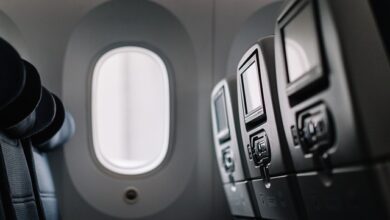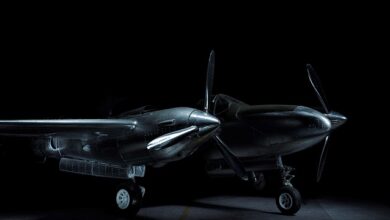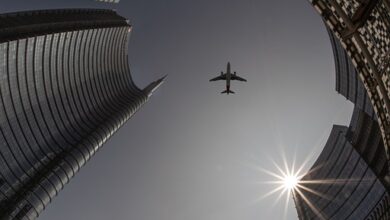Is Flying First-Class Really Worth the Price Tag?

The allure of flying first-class is undeniable. From spacious seats that transform into fully lie-flat beds to gourmet meals prepared by world-renowned chefs, first-class cabins offer a level of luxury and comfort that far exceeds what most travelers experience in economy or even business class. But with ticket prices often reaching astronomical levels—sometimes costing ten times more than an economy seat—the question remains: Is flying first-class really worth the price tag?
In this article, we’ll explore the benefits of first-class travel, weigh them against the costs, and help you determine whether upgrading to first-class is a worthwhile investment for your next trip.
What You Get When You Fly First-Class
To understand whether first-class flights are worth the expense, it’s important to break down exactly what you’re paying for. Here’s a detailed look at the perks that come with flying in the front of the plane:
1. Unmatched Comfort
- Seating: First-class seats are designed for maximum comfort. They recline completely into flat beds, often with adjustable headrests, lumbar support, and plush bedding. Some airlines, like Emirates and Qatar Airways, even offer private suites with doors for complete privacy.
- Space: Legroom is abundant, and the seats themselves are significantly wider than those in economy or business class. This extra space makes long-haul flights much more bearable, especially if you’re traveling overnight.
- Noise Reduction: Many first-class cabins are located in quieter sections of the aircraft, away from the engines, which minimizes noise and enhances relaxation.
2. Gourmet Dining Experience
- Food Quality: First-class passengers enjoy access to high-end cuisine, often crafted by celebrity chefs. Meals are served on fine china with real silverware, and the menu typically includes multiple courses with options for customization.
- Beverages: Premium wines, champagnes, and spirits are available throughout the flight. Some airlines even have sommeliers who curate wine lists specifically for their first-class cabins.
- Dining Flexibility: Unlike economy passengers, who must adhere to set meal times, first-class travelers can dine whenever they choose. This flexibility is particularly appealing for those who want to sleep immediately after takeoff or eat late at night.
3. Personalized Service
- Cabin Crew Attention: The ratio of flight attendants to passengers is much lower in first class, meaning you’ll receive highly personalized attention. Attendants will often address you by name and anticipate your needs before you even ask.
- Amenities: First-class passengers are typically greeted with welcome drinks (often champagne) and given complimentary amenity kits stocked with luxury skincare products, pajamas, slippers, and eye masks.
- Entertainment: First-class cabins are equipped with state-of-the-art entertainment systems, including large HD screens, noise-canceling headphones, and extensive media libraries. Wi-Fi connectivity is usually faster and more reliable as well.
4. Exclusive Airport Perks
- Priority Check-In and Boarding: First-class passengers enjoy expedited check-in, security clearance, and boarding processes, allowing them to bypass long lines and start their journey stress-free.
- Lounge Access: Most airlines grant first-class passengers access to exclusive airport lounges, where they can relax in serene environments before their flight. These lounges often feature gourmet food, bar services, spa treatments, and quiet workspaces.
- Baggage Handling: Your luggage is prioritized for loading and unloading, ensuring that it arrives quickly at your destination.
The Cost Factor: How Much Does First-Class Travel Really Cost?
One of the biggest barriers to flying first-class is the cost. Depending on the airline, route, and season, a first-class ticket can be anywhere from three to ten times more expensive than an economy ticket. For example:
- A round-trip economy ticket from New York to London might cost around $500, while a first-class ticket could range from $3,000 to $10,000.
- On ultra-luxury carriers like Singapore Airlines or Etihad Airways, flagship suites can cost upwards of $20,000 for a single leg of the journey.
For many travelers, these numbers raise the question: Does the added comfort and convenience justify such a steep price increase?
Who Benefits Most from Flying First-Class?
While first-class travel offers undeniable perks, it isn’t necessarily a good fit for everyone. Certain groups of travelers, however, stand to benefit significantly from upgrading to first class:
1. Frequent Business Travelers
- Corporate executives and professionals who travel frequently for work often find value in first-class tickets. The ability to sleep comfortably, stay connected, and arrive refreshed can enhance productivity and make long trips more bearable.
- For business travelers, time is money, and the efficiency of first-class travel (priority boarding, lounge access, etc.) can translate into tangible benefits.
2. Long-Haul Flyers
- If you’re embarking on a transcontinental or intercontinental journey lasting over 10 hours, the extra space and recline options in first class can make a world of difference. Sleeping in a lie-flat bed versus a cramped economy seat can transform your travel experience.
- Long-haul flights in economy can be physically taxing, especially for older travelers or those with health concerns. First class provides a more comfortable and less stressful environment.
3. Special Occasions
- Splurging on a first-class ticket for milestone events—such as honeymoons, anniversaries, or once-in-a-lifetime vacations—can add a touch of luxury and create unforgettable memories.
- For some, the experience of flying first class is part of the overall celebration, making the trip feel more special and indulgent.
4. Travel Enthusiasts with Flexible Budgets
- For affluent travelers who view airfare as just another expense, first class offers a chance to indulge in the finer things in life. It’s about treating oneself to a unique and elevated experience.
- Some travelers use frequent flyer miles or credit card points to upgrade to first class, allowing them to enjoy the luxury without paying the full cash price.
Drawbacks of Flying First-Class
Despite its allure, first-class travel isn’t without its downsides. Here are some potential drawbacks to consider:
1. High Cost
- As mentioned earlier, the price of a first-class ticket can be prohibitive for most travelers. For the same amount of money, you could book multiple economy tickets or extend your vacation by several days.
- Even for business travelers, companies may balk at the idea of spending thousands of dollars on a single flight unless absolutely necessary.
2. Limited Availability
- Not all airlines offer first-class cabins, especially on shorter domestic routes. Even on international flights, the number of first-class seats is limited, which means availability can be scarce.
- Popular routes may sell out quickly, leaving travelers with fewer options to upgrade.
3. Diminishing Marginal Returns
- While first class is undoubtedly more comfortable than economy, some argue that the gap between business class and first class isn’t always significant enough to justify the additional cost. Business class already provides many of the same amenities at a lower price point.
- For example, both classes typically offer lie-flat seats, gourmet meals, and premium service, so the decision often comes down to personal preference and budget.
4. Environmental Concerns
- Luxury air travel comes with a larger carbon footprint compared to economy class. Ethical considerations may deter environmentally conscious travelers from opting for first class.
- Some travelers may feel guilty about the environmental impact of flying in such opulence, especially given the growing awareness of climate change.
Alternatives to Consider
If you’re intrigued by the idea of upgrading but hesitant about the cost, there are alternatives that strike a balance between affordability and comfort:
1. Business Class
- Business class offers many of the same perks as first class—lie-flat seats, gourmet meals, and superior service—at a fraction of the price. For many travelers, it’s a “sweet spot” between luxury and practicality.
- Airlines like Cathay Pacific, ANA, and Turkish Airlines are known for offering exceptional business-class experiences that rival first class.
2. Premium Economy
- Positioned between standard economy and business class, premium economy provides wider seats, more legroom, and enhanced meal options. It’s a great option for those seeking a bit more comfort without breaking the bank.
- Airlines like Virgin Atlantic and Qantas offer premium economy cabins that are worth considering for long-haul flights.
3. Miles and Points Redemption
- Frequent flyers can use loyalty program miles to upgrade to first or business class at a reduced rate. This allows you to experience luxury travel without paying the full cash price.
- Credit card points can also be redeemed for upgrades, making it easier to access first-class cabins without spending thousands of dollars.



